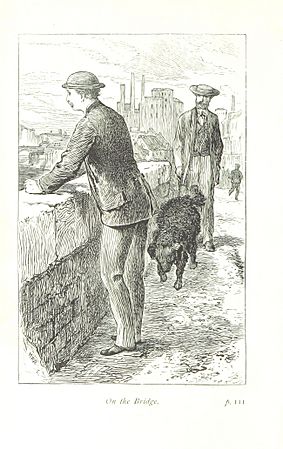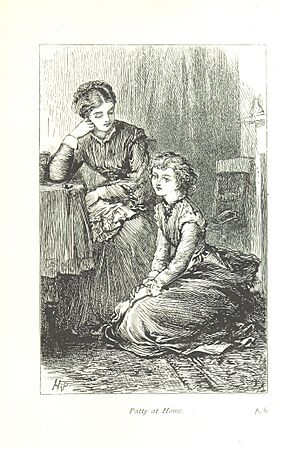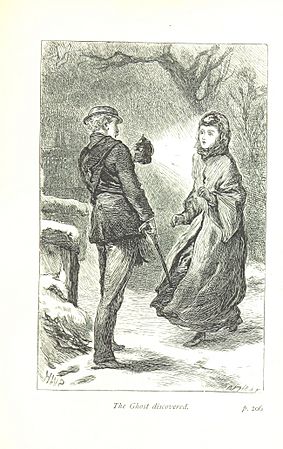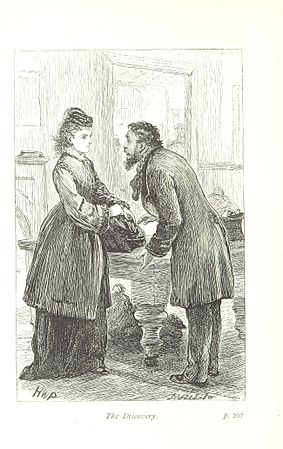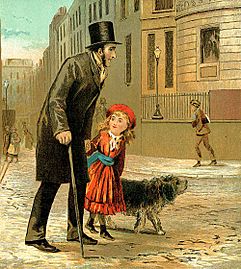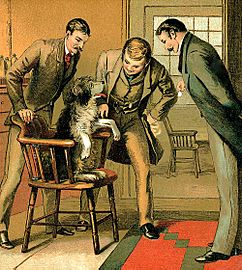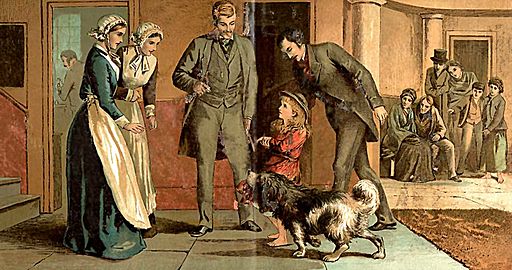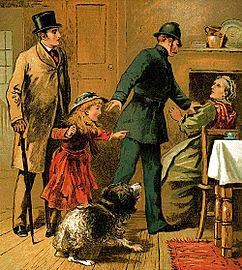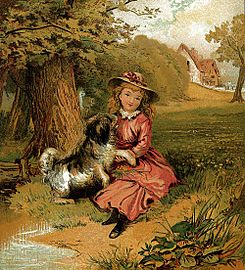Horace William Petherick facts for kids
Quick facts for kids
William Horace Petherick
|
|
|---|---|

Petherick illustrated by his daughter, Rosa C. Petherick
|
|
| Born | 4 December 1839 |
| Died | 8 March 1919 (aged 79) Addiscombe, Croyden, London
|
| Nationality | British |
| Other names | Signed his work as H. P. or H. W. P. |
| Occupation | Artist, Illustrator, Musician, Violin Expert |
| Years active | 1860-1890 as illustrator, from 1890 as a violin expert. |
| Known for | Vice-presidency of the Cremona Society |
|
Notable work
|
The repairing and restoration of violins (1903) |
Horace William Petherick (1839-1919) was a talented British artist, illustrator, and expert on violins. He drew pictures for over 100 books, including many for children. He was also a skilled musician and knew a lot about valuable violins, even owning famous ones like a Stradivarius! Petherick also wrote books about violins, sharing his knowledge with others.
Contents
Early Life and Family
Horace William Petherick was born on December 4, 1839. Not much is known about his very early years. He was one of eight children.
By 1861, Horace was working as an artist. He married Clementina Augusta Bewley Bonny. They moved to Addiscombe, Surrey, and lived there for the rest of their lives. They had seven children, but sadly, two died when they were very young. One of his five daughters, Rosa Clementina (1872-1931), also became an illustrator, just like her father.
Petherick was known as a respected artist. He showed his paintings at important places like the Royal Academy of Arts in London. Four of his artworks can still be seen in public art collections across the UK today.
Work as an Illustrator
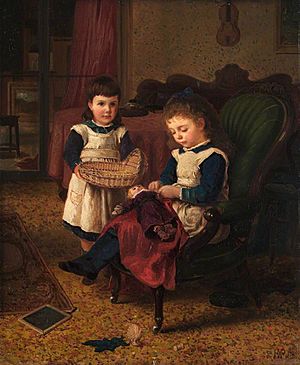
Horace Petherick started illustrating books in 1868. By the early 1870s, he became very busy. He illustrated more than 100 books during his career! He drew pictures for many children's books, but also for some books aimed at young adults. He even created technical drawings for his own books about violins.
Around 1890, he started doing less illustration work. After 1900, he mostly focused on his violin books, as violins became his second career.
Petherick illustrated books for many popular writers of his time, including:
- Clemens Brentano, a German poet.
- Christabel Rose Coleridge, who wrote inspiring stories for children.
- Harry Collingwood, known for adventure stories for boys.
- Georgiana Marion Craik, who wrote for young women and girls.
- Evelyn Everett-Green, who wrote historical romances and children's stories.
- George Manville Fenn, who wrote mainly for young adults.
- G.A. Henty, famous for boys' adventure stories set in history.
- L. T. Meade, a very productive Irish writer of stories for girls.
- W.H.G. Kingston, who wrote adventure stories for boys.
- Laura Valentine, who wrote the popular Aunt Louisa series.
Illustrations for Hanbury Mills (1872)
Here are some examples of his black and white illustrations for a book for young adults.
Most book illustrations back then were black and white drawings. Color was usually saved for books for very young children or for the first few pages of other books. Petherick was known for illustrating children's stories, especially those with characters in costumes. He also worked on some full-color books, like London Characters (1875).
Illustrations for My Dog Tray (c.1880)
Here are some examples of his colorful illustrations for young children.
You can find Petherick's illustrations in digital collections at:
- The British Library
- Project Gutenberg
- Osborne Collection of Early Children's Books
- Baldwin Library of Historical Children's Literature
Expertise in Violins
Horace Petherick was a skilled violinist himself. He owned several valuable violins, including two very famous ones:
- A violin made by del Gesù around 1735, known as the 'Kubelik, Rabin'.
- A Stradivarius violin made by Antonio Stradivari in 1683, known as the 'Petherick, Hart'.
It's not clear exactly when Petherick became a violin expert. By 1900, he was already well-known in the violin world. He was a Vice-President of the Cremona Society, a group interested in violins. He also wrote articles for The Strad, a magazine about stringed instruments. In 1882, he even wrote a series of articles for the Boy's Own Paper called How to Make a Violin.
Petherick wrote several books about violins for The Strad Library:
- Antonio Stradivari (1900)
- The Repairing & Restoration of Violins (1903)
- Joseph Guarnerius, his work and his master (1906)
These books are still available today, showing how important his work was. By 1906, Petherick had become the President of the Cremona Society.
Certifying Violin Origins
Petherick was known for giving certificates that confirmed where violins came from. This helped buyers feel sure they were getting a real, valuable instrument. He was even called an "Expert in Law Courts" from 1891, meaning he could give his opinion in legal cases about violins.
He provided certificates for several violins, including ones supposedly made by famous makers like Joseph Guarnerius and Francesco Stradivarius.
The Disputed del Gesù Cello
In 1906, there was a big discussion about a cello that was claimed to be made by del Gesù. Del Gesù was a very famous violin maker from Cremona, Italy. He was known for adding a religious symbol after his name.
Petherick believed this cello was indeed made by del Gesù, and he wrote a report and certificate saying so. He even presented it at a special meeting of the Cremona Society. However, a weekly magazine called Truth questioned this claim. They suggested that the cello's history was unclear and that the Cremona Society might have too many dealers involved.
Today, experts believe there are only two cellos known to have been completed by del Gesù. Neither of these matches the cello that was discussed in 1906.
Court Cases About Violins
Petherick's opinions on violins were sometimes challenged. In a few court cases, his certificates were questioned by other experts, especially those from W. E. Hill & Sons, a very respected company specializing in violins.
In one case in 1907, a court decided against a dealer who relied on Petherick's certificate for two cellos. The court accepted the view of the expert from W. E. Hill & Sons instead.
In another case in 1908, a doctor bought a violin that Petherick certified as being made by Petrus Guarnerius. But another expert said it was actually French. The jury found that the violin was not as it was described.
These cases showed that even experts could disagree, and Petherick's authority as a violin expert was sometimes debated. After these trials, there were no more public records of Petherick providing certificates for violins.
Later Life and Death
Horace Petherick's wife passed away in 1909. Ten years later, in 1919, Petherick himself died at the age of 80 at his home in Addiscombe. His daughter Rosa was in charge of his estate. All five of his daughters who survived childhood lived longer than him.


